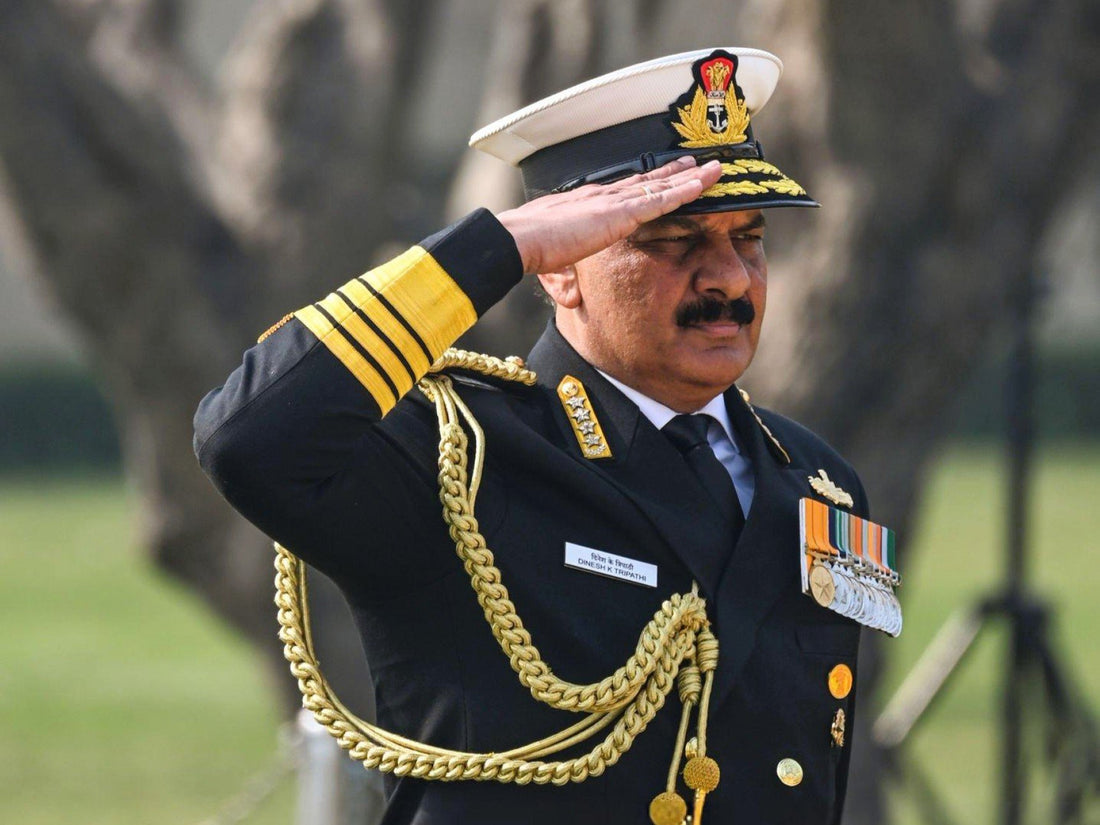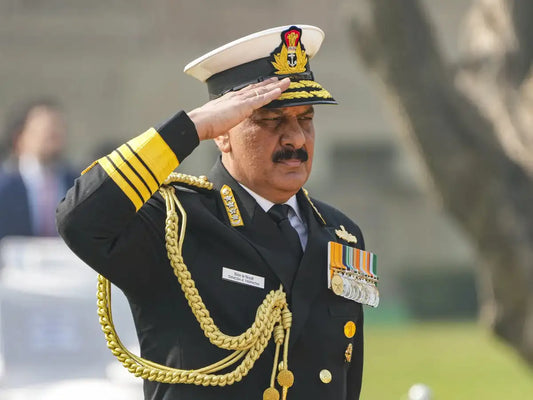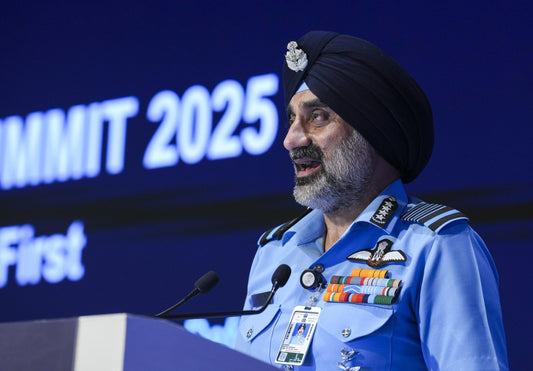Salary Structure and Benefits of the Indian Navy Chief: A Comprehensive Overview

The position of Chief of Naval Staff (CNS) within the Indian Navy is a role of immense responsibility and prestige. As the top-ranking officer in the naval hierarchy, the CNS is responsible for overseeing naval operations, strategic planning, and administration. The role demands ensuring maritime security and contributing to joint military operations, and the salary reflects its significance. Currently, the salary for the Indian Navy Chief is ₹2,50,000 (approximately US$2,900) per month, classified under Pay Level 18 in the Indian government’s pay scale, a level shared by other top-ranking military officials.
Historical Context
The Indian Navy boasts a storied history of significant contributions to both national and international maritime security. From its early post-independence days to its current status as a blue-water navy capable of global operations, the evolution of India's naval power underscores the strategic importance of maritime domains in national defense policy. The CNS role has evolved alongside the Navy, necessitating substantial investment in human and material resources to address modern challenges.
Before 1970, naval officers held ranks without a structured pay scale, leading to disparities and low morale. The introduction of the 5th Pay Commission in the late 1980s established a uniform pay structure, benefiting senior officers like the CNS. Subsequent pay commissions have further elevated compensation for naval officers, recognizing their critical role in safeguarding India's maritime interests.
Key Aspects of the Salary of the Indian Navy Chief
Basic Salary
The Chief of Naval Staff's basic salary is set at ₹2,50,000 per month, indicative of the high responsibility and critical nature of the CNS’s duties. The CNS is tasked with significant leadership responsibilities, including formulating maritime strategy, managing naval resources, and participating in international maritime diplomacy. This demands vast experience, exceptional leadership abilities, and a comprehensive understanding of maritime issues, justifying the substantial salary.
Pay Level
The CNS's salary, categorized under Pay Level 18, aligns with the highest-ranking officers in the Indian military, including the Chief of Army Staff and Chief of Air Staff. This parity ensures military leadership is fairly compensated for their contributions to national defense. Such pay structures can attract and retain talent in the competitive field of military leadership.
Allowances and Benefits
In addition to the attractive basic salary, the Indian Navy Chief receives various allowances and benefits that enhance the overall compensation package:
- Housing Allowance: The CNS is typically provided with government-associated accommodation in prime locations, ensuring a comfortable living environment suited to the stature of the role.
- Transport Allowance: Given the responsibilities associated with the position, the CNS receives transport allowances to facilitate official duties and personal mobility.
- Healthcare Benefits: Comprehensive healthcare for the officer and their family is standard, reflecting the commitment to the welfare of military personnel.
- Pension and Retirement Benefits: These benefits ensure financial security post-service, contributing to the overall attractiveness of a career in the Indian Navy.
The officer also enjoys various perks, including a sum assured of ₹50 lakh for insurance coverage, which is crucial considering the risks associated with military service.
Military Service Pay
For ranks below the Chief of Naval Staff, a Military Service Pay (MSP) of ₹15,500/month is applicable, benefiting lower-ranking officers who receive this compensation in recognition of their dedicated service and the unique demands of military life. However, for the CNS, this additional pay is not applicable, highlighting the distinctive nature and expectations tied to the highest naval position.
Statistical Data and Research Insights
To better understand the salary structure for naval officers, below is an overview of the pay scales for various ranks leading up to the position of CNS. The progression provides insight into how the compensation increases with rank and responsibility:
| Rank | Pay Level | Basic Pay Range (₹) | MSP (₹) |
|---|---|---|---|
| Sub Lieutenant | 10 | 56,100–1,77,500 | 15,500 |
| Lieutenant | 10B | 61,300–1,93,900 | 15,500 |
| Lieutenant Commander | 11 | 69,400–2,07,200 | 15,500 |
| Commander | 12A | 1,21,200–2,12,400 | 15,500 |
| Captain | 13 | 1,30,600–2,15,900 | 15,500 |
| Commodore | 13A | 1,39,600–2,17,600 | 15,500 |
| Rear Admiral | 14 | 1,44,200–2,18,200 | None |
| Vice Admiral | 15 | 1,82,200–2,24,100 | None |
| Vice Admiral and Equivalent | 16 | 2,05,400–2,24,400 | None |
| DGAFMS / VCNS / C-IN-C/ Equivalent | 17 | 2,25,000 | None |
| CNS / Equivalent | 18 | 2,50,000 | None |
This structured pay hierarchy plays a critical role in maintaining morale and motivation within the naval ranks, ensuring personnel across the chain of command feel valued for their contributions.
Comparative Analysis
When examining the remuneration of the Chief of Naval Staff, comparisons with other military services such as the Army and the Air Force are beneficial. The salary structure is consistent across these branches for top military officials, reflecting a commitment to standardization within the armed forces. Chiefs of Army and Air Staff are also placed in Pay Level 18 with a similar salary framework.
This similarity fosters cooperative engagement and shared goals among the leadership of the three services, reinforcing a unified command culture essential for effective joint operations.
Challenges and Solutions
Despite competitive salaries and benefits, challenges persist within the Indian Navy, including recruitment shortages, retention of skilled personnel, and expanding operational demands. Addressing these challenges is crucial for maintaining operational readiness and ensuring personnel receive adequate support.
Several solutions can be implemented:
- Enhanced Recruitment Strategies: Expanding outreach and inclusivity in recruitment campaigns can attract a larger pool of candidates interested in naval careers.
- Retention Programs: Instituting comprehensive professional development programs and benefits tailored to the unique needs of naval officers can improve retention rates.
- Focus on Mental Health: Implementing strong mental health support systems can enhance the well-being of personnel and their families, cultivating a supportive culture that values holistic health.
Future Trends and Predictions
As the geopolitical landscape evolves, the significance of naval forces is expected to grow. The Indian Navy is anticipated to expand its capabilities, requiring continued investment in personnel, technology, and infrastructure. The increasing emphasis on maritime security will likely prompt the government to reassess compensation packages for all service members to enhance attractiveness and competitiveness.
Ongoing modernization programs within the naval fleet will require a highly trained and skilled workforce, placing even more emphasis on leadership roles such as the CNS.
Conclusion
In summary, the salary of the Chief of Naval Staff in the Indian Navy reflects the immense responsibilities and strategic importance of this role. The base salary of ₹2,50,000, supported by various allowances and benefits, positions this rank among the highest echelons of Indian government compensation.
With a structured pay hierarchy and benefits that foster career growth and security, the Indian Navy continues to attract skilled personnel to meet maritime challenges. As the Navy's capabilities and scope evolve, ensuring competitive compensation remains crucial for maintaining operational readiness and enhancing national security.
For those considering a career in the Indian Navy, resources such as SSBCrack and SSBCrackExams provide invaluable guidance, including study materials and courses tailored to prospective candidates.
Connecting the dots between the CNS salary, historical context, and future trends paints a comprehensive picture of the standing of naval leadership in India today, shedding light on how crucial support systems and compensation remain an essential pillar in cultivating a resilient and forward-looking naval force.



















